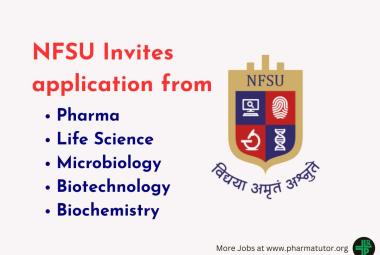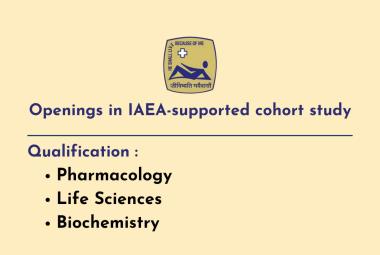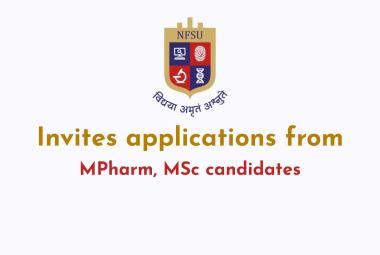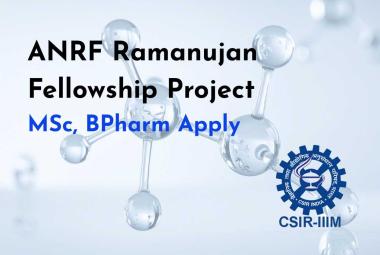About Authors:
Smriti Rai, Ashok kr. Bhambu, Neelam Sharma, Rupesh Gautam
Department of Pharmacology,
Jaipur college of Pharmacy,
Jaipur, India.
*rsmriti22@yahoo.com
Abstract
Gastric ulcer is most widespread disease and this is due to imbalance between aggressive and defensive factors. Various parts of plants like root, rhizome, bark, leaves, fruit, flower or even the whole plants are used in the treatment of ulcer by the Indian community especially those belongs to the tribals and rural areas. This is well known that various constituents present in plants like flavanoids are responsible for antiulcer activity.This study is aimed to collect some plants of antiulcer property to provide information regarding to cure the ulcer. The plants are widely used in treatment of ulcers areBenincasa hispida fruit extract(RS), Aspilia africana,Azima tetracantha, Ficus religiosa,Zingiber officinale, and Ocimum sanctum.
[adsense:336x280:8701650588]
Reference Id: PHARMATUTOR-ART-1295
INTRODUCTION
An ulcer is basically an inflamed break in the skin or the mucus membrane lining the alimentary tract. About 19 out of 20 peptic ulcers are duodenal. Gastric ulcers are duodenal. Gastric ulcers, found in the stomach wall are less common.1
Peptic ulcer disease is an imbalance of aggressive gastric luminal factors like acid and pepsin, bile salts, food ingredients, bacteria Helicobacter pylori and defensive mucosal barrier function may be environmental and host factors contribute to ulcer formation by increasing gastric acid secretion or weakening the mucosal barrier.2-4 Infection of the stomach mucosa with helicobacter pylori – a gram negative spiral-shaped bacterium is now generally considered to be a major cause of gastro-duodenal ulcer.5The defensive factors( mucus , mucosal blood flow, formation of HCO3-and PGE2) are impaired by aggressive factors in gastric ulcer patients there is loss of pyloric sphincter tone which precipitates duodenal-gastric reflux of bile. Such regurgitation of bile acid injuries the gastric mucosa and weakens the gastric mucosal barrier, acid peptic disease include hyperacidity, gastro-esophageal reflux, stress induced mucosal erosions peptic ulcers, a localized loss of gastric as well as duodenal mucosa leads to the formation of peptic ulcer.6
PATHOPHYSIOLOGY OF PEPTIC ULCER7
Peptic ulcer is a break in the lining of the stomach or duodenum. The break can involve the mucosa, muscularis mucosa, submucosa, and in some cases, the deeper layers of the muscle wall.
(a) Helicobacter pylori
H. pylori, a gram- negative, spiral-shaped bacterium, is most common cause of non-NSAID-associated peptic ulcer disease. H. pylori mainly found in the gastric antrum.
It lives in the acidic environment of the stomach and is acid resistant because of its production of the enzyme urease, which converts urea to ammonia. The ammonia buffers the H+ and forms ammonium hydroxide, creating an alkaline cloud around the bacterium and protecting it from the acidic environment of stomach. Urease is one of these damaging factors because it is an antigen that causes a strong immune response. In addition, the ammonium hydroxide produced by urease causes gastric epithelial cell injury.
(b) Non SteroidalAnti InflammatoryDrugs (NSAID)
NSAID associated gastrointestinal damage is liable to produce topical injury as well as systemic effects of NSAIDs.
LOCAL EFFECT:- Most of the NSAIDs are weak organic acids. These drugs are neutral compounds in acidic environmental of stomach, cross the plasma membrane and enter gastric epithelial cells. In the neutral intracellular the drugs are reionized and trapped, resulting in intracellular damage representing local gastrointestinal injury associated with NSAID use.
SYSTEMIC EFFECT:- NSAIDs causes systemic injury because of decreased mucosal prostaglandin synthesis. Two cyclooxygenase(COX) enzyme catalyze the formation of prostaglandins from arachidonic acid. COX-1 is constitutive in nature and produces the gastric prostaglandins responsible for mucosal integrity, whereas COX-2 is inducible as it is induced by inflammatory stimuli. COX-1 inhibition by NSAIDs can lead to mucosal ulceration because inhibition of PGE2synthesis removes one of the protective mechanism maintaining the integrity of the gastric mucosa.
(C) Acid hypersecretion-
Another causative factor in patients ofd peptic ulcer disease is acid hyperscrection, characterized in Zollinger Ellison syndrome and Cushing’s syndrome in which hyperacidity leads to peptic ulcer disease. In Zollinger Ellison syndrome, a gastrin-secreting tumour of the known beta cells of the endocrine pancreas leads to increased acid secretion. In Cushing’s ulcers, seen in patient with several head injuries, heightened vagal (cholinergic) tone causes gastric hyperacidity.
(D) Other factors
Pepsin, digestive enzyme secreted by gastric chief cells as the inactive precursor pepsinogen, has role in ulcer disease because of its impairment of mucosal blood flow and healing and its inhibition of pancreatic bicarbonate production. Caffeine ingestion (increased acid secretion), alcoholic cirrhosis, glucocorticoid use, and genetic influences are also associated with peptic ulcer disease. Finally, chronic psychological stress (stress induced ulcers) may occasionally be an important cause of peptic ulcer disease.7
(E) Inhibition of gastric secretion by post stomach intestinal factorsIntestinal chime stimulates gastric secretion during the intestinal phase of secretion and paradoxically, it often inhibits gastric secretion during the gastric phase. This inhibition results from at least two influences:
(1) The presence of food in the small intestine initiates a reverse enterogastric reflex. Transmitted throughthe myenteric and vagus nerves, that inhibits stomach secretion. The reflex can be initiated by distention of the small bowel, the presence of acid in the intestine, the presence of protein breakdown products, or irritation of the mucosa. This complex mechanism explains slowing down of stomach emptying when the intestines are already filled.
(2) The presence of acid, fat, protein breakdown products, hyperosmotic or hypo-osmotic fluids, or any irritating factor in the upper small intestine causes the release of several intestinal hormones. One of these is secretin, which is especially important for control of pancreatic secretion. However, paradoxically, secretin opposes stomach secretion. Three other hormones–gastric inhibitory peptide, vasoactive intestinal polypeptide, and somatostatin – also have slight to moderate effects in inhibiting gastric secretion.Stomach secretes a few milliliters of gastric juice each hour during the “interdigestive period” when little or no digestion is occurring anywhere in the gut, nonoxyntic type composed mainly of mucus that contains little pepsin and almost no acid. Emotional stimuli frequently increase interdigestive gastric secretion to 50 milliliters or more (and highly peptic and acidic) per hour. This increase of acid secretion may also be responsible for peptic ulcer disease.19
NOW YOU CAN ALSO PUBLISH YOUR ARTICLE ONLINE.
SUBMIT YOUR ARTICLE/PROJECT AT articles@pharmatutor.org
Subscribe to PharmaTutor Alerts by Email
FIND OUT MORE ARTICLES AT OUR DATABASE
THE MEDICINAL PLANTS USED IN THE TREATMENT OF ULCER-
The goals of the treating peptic ulcer disease are to relieve pain, heal and prevent ulcer recurrence. There is no cost effective treatment that meets all these goals and efforts were made to find suitable agents for treatment from plant origin.8 Herbal prescription and natural remedies are commonly employed in developing countries of the treatment of various diseases, this practise being an alternative in orthodox pharmacotherapy. This herbal medicines derived from various plants extracts are being increasingly utilized to treat a wide variety of clinical diseases.9
Preliminary photochemical screening of the medicinal plants identified the presence of important secondary metabolites like flavonoids, aescin, aloe gel and many others, that possess antiulcer activity are of particular therapeutic importance as most of the anti-inflammatory drugs used in modern medicines are ulcerogenic. Active principles of antiulcer are flavonoids, terpenoids and tannins.10
List of plants having anti-ulcer activity-
|
S.no |
Name |
Family |
|
1 |
Azima tetracantha |
Salvadoraceae |
|
2 |
Asparagus racemosus |
Asparagaceae |
|
3 |
Allophylus serratus |
Sapindaceae |
|
4 |
Benincasa hispida |
Cucurbitaceae |
|
5 |
Ficus religiosa |
Moraceae |
|
6 |
Ocimum sanctum |
Labiatae |
|
7 |
Rubia cordifolia |
Rubiaceae |
|
8 |
Rocket “Erica sativa” |
Brassicaceae |
|
9 |
Zingiber officinale |
Zingiberaceae |
Benincasa hispida (Thunb) Cogn (Family; Cucurbitaceae)
Benincasa hispida is commonly known as Bhuru kolu or Safed kolu (Gujrati), Petha (Hindi).11 The methanolic extract of the fruits is reported to possess antiulcer activity.12 Phytochemical review indicates the presence of the triterpenes: alnusenol, multiflorenol, iso-multiflorenol ; flavones; iso-vitexin and sterols, lupeol, lupeol acetate and beta sitosterol.13
Rocket “Erica sativa” L.
Rocket “Erica sativa” locally known as Jarjeer belonging to the family Brassicaceae, used as salad by herbal practitioners. The plants belonging to the Brassicacae family diversified medicinal and therapeutic properties including inhibition of tumorigenesis, antiulcer and hepatoprotective activities. Ethanolic extract of the Rocket possesses significant anti-secretory, antiulcer and cytoprotective properties.14
Azima tetracantha Lam
Azima tetracanthabelonging to the family Salvadoraceae.Azima tetracantha leaves possess stimulant and antispasmodic activities. The ethanolic extract of A.tetracantha leaves were investigated for its ulcer protective activity on the aspirin and pyloric ligation.15
Rubia cordifolia Linn.
Rubia cordifoliabelongs to the family Rubiaceae, is a climber growing in northwest Himalaya and other hilly areas of India. It is commonly known as Manjith (Hindi). It contains several active constituents such as saponins, rubiadin (Anthaquinone glycoside), 6-methoxygeniposide (Iridoids) and triterpenoids. Rubiadin has potent antioxidant and inhibit lipid peroxidation activity. Alcoholic extracts of roots of Rubia cordifolia has antiulcer potential on alcohol induced, ibuprofen induced, cold-restraint stress and pyloric ligation- induced gastric lesions.16
Ficus religiosa L.,
Ficus religiosa belonging to the family Moraceae is a large deciduous tree with few or no aerial roots. F. religiosa has anthelmintic, antibacterial, anti-diabetic, and antioxidant, wound healing, anti-inflammatory, analgesic, antiulcer, anti-lipid peroxidation. It possesses anti-secretory potency as well as acid neutralizing effect. The ethanolic extract of stem bark of F. religiosahas antiulcer potential. The antiulcer activity is due to presence of bioactive compounds like flavonoids, saponins and tannins.17
Asparagus racemosus Wild-
Asparagus racemosus wild belongs to the family Asparagaceae. It contains the active constituents exhibiting medicinal properties are Shatavarin( steroidal saponins). Four types of Shatavarins, Shatavarin I-IV are present in the roots. Apart from this querticin-3-glycoside, rutin in shoots; sitosterol, stigma sterol and some other unidentified saponins are found in fruits and seeds. It is used in leucorrhoea, headache, useful in acidity. It is given to pregnant ladies to deliver babies, it is relieve pains. Roots powder is used to increase vigor and strength; roots are used as an anti-inflammatory, antiulcerogenic, antitumor activity.18
Ocimum sanctum Linn. (Tulsi)
Ocimum sanctum(OS), popularly known as Tulsi in Hindi is a sacred plant that belongs to the family Labiatae. OS contains a number of chemical constituents that interact herbal complex way to elicit their pharmacodynamic responses. OS is highly effective in a wide spectrum of diseases and reported to possess anticarcinogenic, anthelmintic, antiseptic, antirheumatic, antistress, and antibacterial properties.[20]-[22] Clinical trails have reported the usefulness of OS in heart diseases[23] and diabetes.[24] OS also possess antiinflammatory and immunomodulatory properties, attributed to its potential to inhibit cyclooxygenase and lymphokines.25 Fixed oil of OS showed that OS had potent antiulcer effect against ulcer induced by aspirin, indomethacin, histamine, serotonin, alcohol, reserpine and stress. They suggested that the strong antiulcer effect of OS was possibly due to the inhibition of 5- lipooxygenase in aspirin, indomethacin, and alcohol induced ulcer. The antiulcer effect was due to its antihistaminic, anticholinergic, and antisecretory properties.26
Allophylus serratus Kurz
Allophylus serratus Kurz (Synonym Allophylus cobbe Raeuschel; Allophylus edulis Radlk), is one of the largest genus of family Sapindaceaeand carries a strong ethnopharmacological background. The plant is used in Ayurveda, to treat problems like inflammation, elephantiasis, oedma, and fracture of bones. It is also used in several gastrointestinal disorders including dyspepsia, anorexia, and diarrhoea.[27], [28] Leaves of the plant contain ß-sitosterol. They also contain phenacetamide, a chemical known for its antiulcer activity.[29] A edulis has also been reported to contain two flavonoid glycosides that are effective against ulcer.[30], [31]
Aspilia Africana
Aspilia africana is a semi wood herb occurring throughout the regions of the savannah and tropical Africa on waste lands. The plant has been reported to possess antimicrobial activity, haemostatic, antifertility, anti inflammatory activity, the West Africa have reported the wound healing and antiulcer activity of its n-hexane and methanolic extracts. South eastern Nigeria,leaves of this plant is to be effective in the treatment of stomachache and bleeding gastric ulcers specially when taken as an aqueous decoction.32
Zingiber officinale Roscoe
Ginger consist of the near surface and underground rhizomes of Z. officinale belonging to the family Zingiberacae. Ginger has been used as a condiment and medicine for centuries. Its use is recorded in early Sanskrit and Chinese texts and is also documented in ancient Greek, Roman and Arabic medical literature33. Powdered rhizome of ginger root has been used as a traditional remedy for gastrointestinal complaints including in treating peptic ulceration despite the fact that ginger promotes gastric secretions34. Gingerols have been reported to be responsible for the characteristic taste and many pharmacological activities including motion35,36. It was speculated that the anti motion sickness properties of ginger resulted from effects on the gastrointestinal tract rather than effects on the central nervous system37. Studies show that ginger increases gastrointestinal propulsion38. Several anti-ulcer compounds have been isolated from ginger, including 6-gingesulphonic acid39, 6-shogaol and ar-curcumene40. Most notable is 6-gingesulphonic acid, which showed weaker pungency and more potent anti-ulcer activity than 6-gingerol and 6-shogaol41-43. The antiulcer activity of ginger may also be due to the potent thromboxane synthetase inhibition44,34.
Conclusion
Gastric ulcer is known as damage of the mucosal integrity of the stomach, and duodenum defect produced due to active inflammation. Some noxious agents like(acid, pepsin, bile acids, pancreatic enzymes, drugs and bacteria) attacking on the gastro duodenal mucosa by a host of integrity is maintained by an intricate system that provides mucosal defense and repair.
Oldest medicinal systems in the world provides leads to find therapeutically useful compoundsfrom plants.From this study, it is clear that the medicinal plants play a vital role against on various diseases. Various herbal plants and plants extracts have significant antiulcer activity in animal models. It has muco-protective activity and gastric anti-secretary when compared with that of reference herbal drugs. The extract is non-toxic even at relatively high concentrations. The antiulcer activity is probably due to the presence of flavonoids in all few herbal plants. Our review results showed that above-mentioned medicinal plants could prevent ulcer with the principle on dose-dependent. A variety of botanical products have been reported to possess antiulcer activity. Finally, it should be noted that substances such as flavonoids and tannins that possess antiulcer activity are of particular therapeutic importance. The results of this study indicate that extracts of leaves and plants extracts of some medicinal plant have good potentials for use in peptic ulcer disease.
Acknowledgement-
Theauthors wish sincere thanks to Dr. J.S Bapna, Director of Jaipur College Of Pharmacy, Jaipur and Mr. M M Gupta, Principal, Jaipur College Of Pharmacy, for their guidance, advice and valuable hints with energizing during this review work.
References-
1. Grossman M. Peptic ulcer: A guide for practicing physician.An J Pharm Toxicol.Vol 4. Chicago: Year Book Medicinal Publisher;2009.P 79,83-93.
2. Davenport, H.W., N Engl J Med 1967,276, 1307–1312.
3. Flemstrom, G., Turnberg, L. A.,Gastroduodenal defence mechanisms. In:Isenberg JI, Johansson C, eds. Clinics in Gastroenterology, 13th edn. London,Philadelphia, Toronto: WB Saunders Company, 1984: 327–54.
4. Grossman, M.I., Gastroenterology 1978,75, 524–26.
5. Rang HP, Dale MM, Ritter M, Moore PK.(eds). Phamacology,5th edition. Churchill, Livingstones, Edinburgh;2003;pg-797.
6. Sharma H.L and Sharma K.K; Principles of Pharmacolgy.1st edition Hyderabad, New Delhi: Paras Medical Publishers 2007;386-99.
7. Golan, D.E., Tashjian, A.H., Armstrong,E.J., Armstrong, A.W. (EDs.), Principles of Pharmacology The Pathophysiologic Basis of Drug Therapy, Lippincott Williams & Wilkins, USA 2008, pp. 811-823.
8. Muralidhar T.S, Balaji A, Bandopadhyay C. and Shantha S.L; Cytoprotective effect of ulgen, a polyherbal formulation against physical and chemical factor induced gastric ulcers in wistar albino rats, Amer j Pharmacol Toxicol 2009, 4: 80-84.
9. Hemnani T, Parihar M.S. Reactive oxygen species and oxidative DNA damage. Indian J Physiol Pharmacol 1998; 42:440-452.
10. Kokate C.K, Purohit A.P, Gokhale S.B. Pharmacognosy.13th ed Pune; Nirali Prakashan Publisher; 2007. P 35.
11. Kirtikar K.R, Basu B.D, Benincasa hispida G. Blatter E, Caius J.F, Mhaskar K.S, editors Indian Medicinal Plants. Vol 2 2nd ed Dehradun; MIS Bishen Singh Mahendra Pal Singh; 1975p 1126-8.
12. Grover J.K, Adiga G, Vats V, Rathi S.S. Extracts of Benincasa hispida prevent development of experimental ulcers. J Ethnopharmacol 2001,78,159-64.
13. Yoshizumis, Murakami T, Kadoya M, Matsada H, Yamahara J, Yoshi Kawa M. Medicinal food stuffs XI. Histamine release inhibitors from wax gourd, the fruits of Benincasa hispida Cogn. Yakugaku Zasshi. 1998; 188-92.
14. Alqasoumi S, Al-Sohaibani M, Al-Howiriny T, Al- Yahya M, Rafatullah S. Rocket “Eruca sativa”; A salad herb with potential gastric antiulcer activity. World J Gastroenterol 2009; 15(16): 1958-65.
15. Muthusamy P, Suresh A Jerad and Balamurugan G. Antiulcer Activity of Azima Tetracantha: A Biochemical Study. Research J.Pharm and Tech.2(2): 2009; 344-348.
16. Kalra P, Datusalia A.K, Sharma S. Antiulcer potential of Rubia cordifolia Linn. In experimental animals. Int J Green Pharm 2011;5:149-54
17. Khan Mohammed Safwan Ali, Hussain Syed Ahmed, Jais Abdul Manan Mat, Zakaria Zainul Amiruddin and Khan Mohib. Antiulcer activity of Ficus religiosa stem bark ethanolic extract in rats. Journal of Medicinal Plants Research Vol. 5(3),2011, pp 354-359.
18. Goel RK, Sairam K. Anti-ulcer drugs from indigenous sources with emphasis on Musa sapientum, Asparagus racemosus and Zingiber officinale. Indian J Pharmacol 2002; 34: 0100-10.
19. Guyton, A.C. and Hall, J.E. (Eds.), Textbook of Medical Physiology, W.B. Saunders Company, Singapore 2001, pp. 738-753.
20. Godhwani S, Godhwani JL, Vyas DS. Ocimum sanctum: An experimental study evaluating its anti-inflammatory, analgesic and antipyretic activity in animals. J Ethnopharmacol 1987;21:153-63.
21. Singh S, Majumdar DK. Evaluation of the gastric antiulcer activity of fixed oil of Ocimum sanctum (Holy Basil). J Ethnopharmacol 1999;65:13-9.
22. Bhargava KP, Singh N. Anti-stress activity of Ocimum sanctum Linn. Indian J Med Res 1981;73:443-51
23. Sood S, Narang D, Dinda AK, Maulik SK. Chronic oral administration of Ocimum sanctum Linn. augments cardiac endogenous antioxidants and prevents isoproterenol-induced myocardial necrosis in rats. J Pharm Pharmacol 2005;57:127-33.
24. Rai V, Mani UV, Iyer UM. Effect of Ocimum sanctum leaf powder on blood lipoproteins, glycated protein and total amino acids in patients with non-insulin-dependent diabetes mellitus. J Nutr Environ Med 1997;7:113-8.
25. Mediratta PK, Sharma KK, Singh S. Evaluation of immunomodulatory potential of Ocimum sanctum seed oil and its possible mechanism of action. J Ethnopharmacol 2002;80:15–20.
26. Dharmani P, Kuchibhotla VK, Maurya R, Srivastava S, Sharma S, Palit G. Evaluation of anti-ulcerogenic and ulcer healing properties of Ocimum sanctum Linn. J Ethnopharmacol 2004;93:197-206.
27. Gupta AK, Tandon N. Reviews on Indian Medicinal Plants. Vol 2. New Delhi: Indian Council of Medical Research; 2004.
28. Agrawal VS. Drug plants of India. Ludhiana, India: Kalyani publishers; 1997.
29. Rastogi RP, Mehrotra BN. Compendium of Indian Medicinal Plants. Vol 4. New Delhi: Publication and Information Directorate; 1995.
30. Rastogi RP, Mehrotra BN. Compendium of Indian Medicinal Plants. Vol 1. New Delhi: Publication and Information Directorate; 1990.
31. Rastogi RP, Mehrotra BN. Compendium of Indian Medicinal Plants. Vol 3. , New Delhi: Publication and Information Directorate;1993.
32. Ubaka MC, Ukwe VC, “Investigation in to the anti ulcer activity of the aqueous leaf extract of Aspilia Africana C.D. Adams”, Asian Journal of medical sciences, 2010;2(2): 40-43.
33. Govindarajan VS. Ginger-Chemistry, Technology and Quality Evaluation: Part 1. CRS Critical Reviews in Food Science and Nutrition 1982;17:1-96.
34. Backon J. Ginger: Inhibition of thromboxane synthetase and stimulation of prostacyclin: Relevance for medicine and psychiatry. Med Hypoth 1986;20:271-8.
35. Mowbrey DB, Clayson DE. Motion sickness, ginger and psychophysics. Lancet 1982;1:655-7.
36. Grontved A, Brask T, Kambskard J,Hentzer E. Ginger root against seasickness. Acta Otolaryngol 1988;105:45-9.
37. Holtmann S, Clarke AH, Scherer H, Hohn M. The antimotion sickness mechanism of ginger. Acta Otolaryngol 1989; 108:168-74.
38. Yamahara J, Huang Q, Li Y, Xu L, Fujimura H. Gastrointestinal motility enhancing effect of ginger and its active constituents. Chem Pharm Bull 1990;38:430-1.
39. Yoshikawa M, Hatakeyama S, Taniguchi K, Matsuda H, Yamahara J. 6-Gingesulfonic acid, a new antiulcer principle and Gingerglycolipids A, B and C, Three new monoacyldigalactosyl glycerols, from Zingiberis Rhizoma originating in Taiwan. Chem Pharmaceu Bull 1992;40 : 2239-40.
40. Yamahara J, Hatakeyama S, Taniguchi K, Kawamura M, Yoshikawa M. Stomachic principles in ginger II pungent and antiulcer effects of low polar constitutents isolated from ginger, the dried rhizome of Zingiber officinale Rosc. cultivatied in Taiwan. The absolute stereostructure of a new Diarylheptanoid Yakugaku Zasshi. J Pharmaceu Soc Jap 1992;112:645-55.
41. Yamahara J, Mochizuki M, Rong HQ, Matsuda H, Fujimura H. The antiulcer effect in rats of ginger constitutents. J Ethnopharmacol 1988;23:299-304.
42. al-Yahya M A, Rafatullah S, Mossa J S, Ageel A M, Parmar N S, Tariq M. Gastroprotective activity of ginger (Zingiber officinale Rosc.) in albino rats. Am J Chin med 1989;17:51-6.
43. Yoshikawa M, Yamaguchi S, Kunimi K, Matsuda H, Okuno Y, Tamahara J, Murakami N. Stomachic principles in ginger III. An antiulcer principle, 6-gingesulfonic acid and three monoacyldigalactosylglycerols, ginger glycolipids A, B and C, from Zingiberis Rhizoma originating in Taiwan. Chem Pharmaceu Bull 1994;6:1226-30.
44. Srivastava KC. Aqueous extracts of onion, garlic and ginger inhibit platelet aggregation and alter arachidonic acid metabolism. Biomed Biochem Acta 1984;43:335-46.
NOW YOU CAN ALSO PUBLISH YOUR ARTICLE ONLINE.
SUBMIT YOUR ARTICLE/PROJECT AT articles@pharmatutor.org
Subscribe to PharmaTutor Alerts by Email
FIND OUT MORE ARTICLES AT OUR DATABASE









